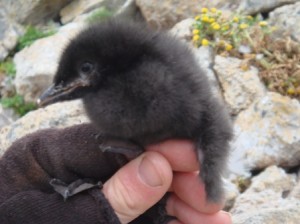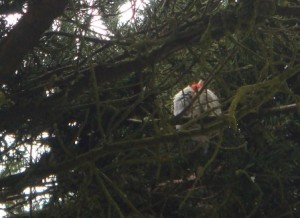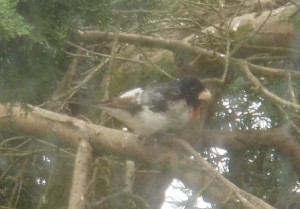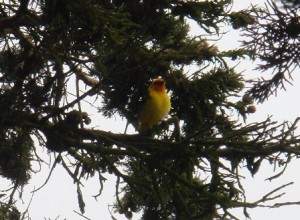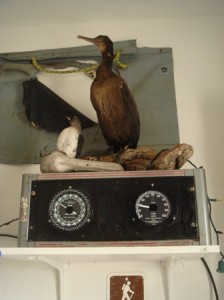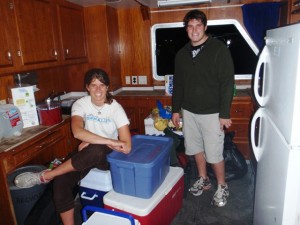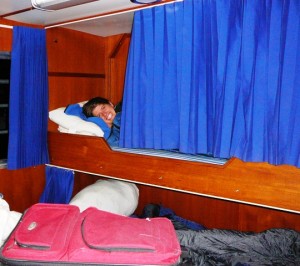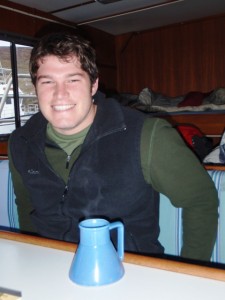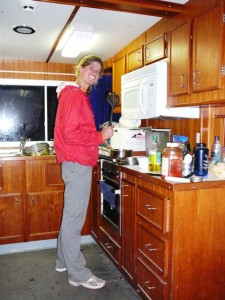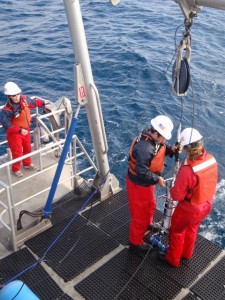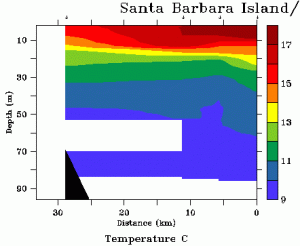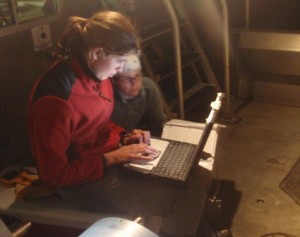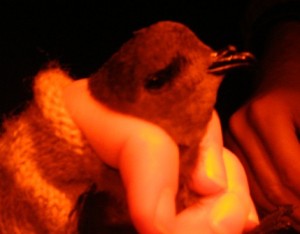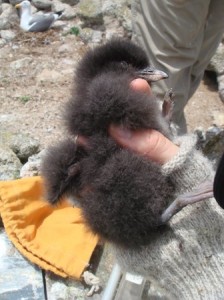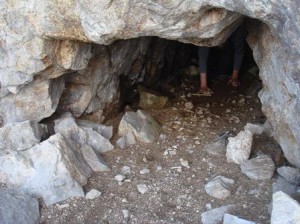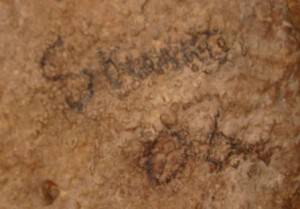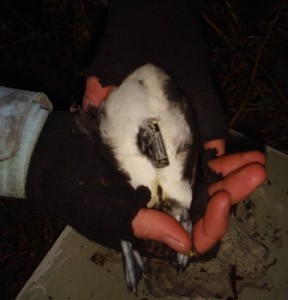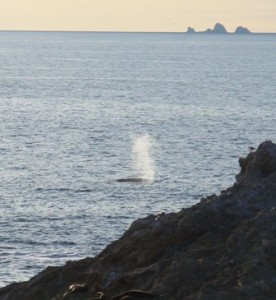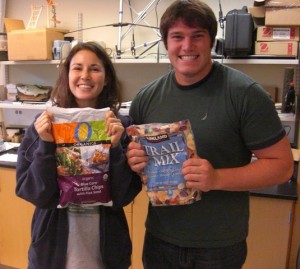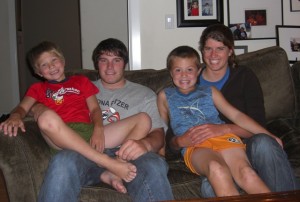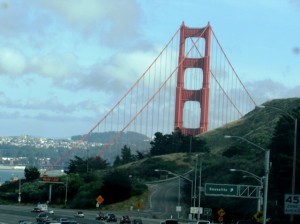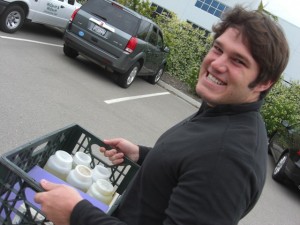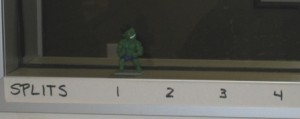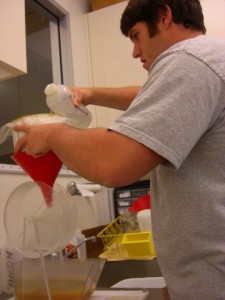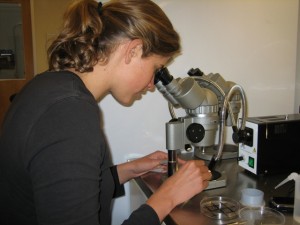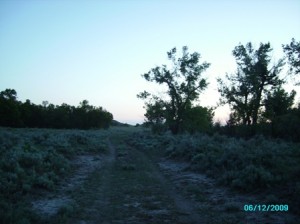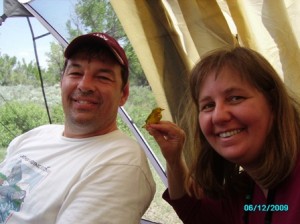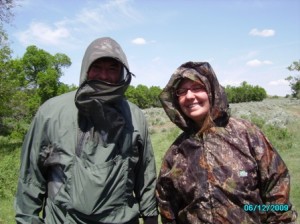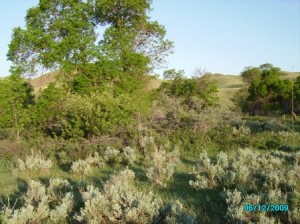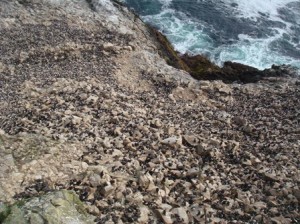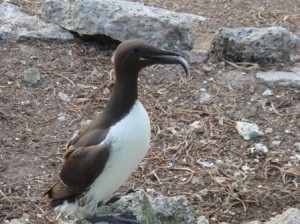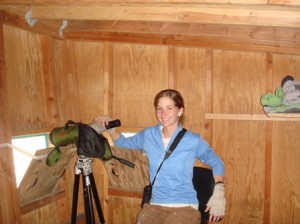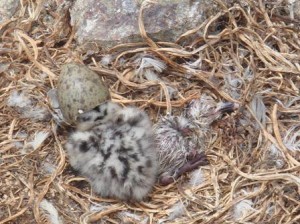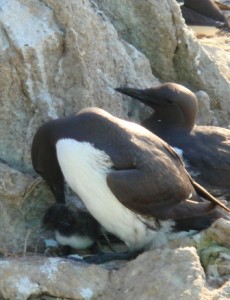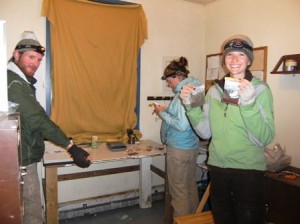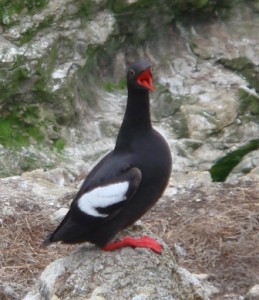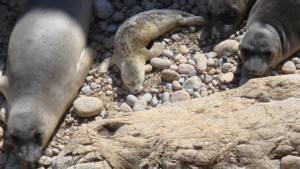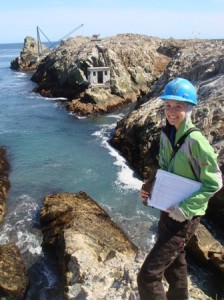Well, these last two days, the wind has been back, and with a vengeance. Today, we’ve been experiencing gusts up to 25-30 knots, and that’s not even as strong as the wind can get here. If you’ve never been in wind that speed, it’s hard to describe, but it makes everything more difficult. During particularly strong gusts, you literally have to push yourself to keep walking forward. The wind and cool weather, however, are bringing benefits for everyone–the upwelling is good for the birds, as I said in my last entry, and the overall change in climate is good for the humans, in that it has reduced our flea problem. Yes, I have fleas. We all do. They hop on you while you’re doing bird work, bite you, and then hang out in your socks for a little while, biting you more. Unlike birds, the fleas won’t actually live on us, they bail after a pretty short time, but the bites they leave are pretty bad, and very itchy. So, with my new strategy of wearing rubber boots, combined with the new weather, I’m hoping my legs will have a chance to heal. So pleasant to contemplate, I know.
Yesterday, as I mentioned, we started our all-day diet watches. I spent four hours at the Murre Blind yesterday, from six to eight am, and then again from ten to twelve. Pete and I, during the very early morning watch, were recording fish being brought in almost every minute, but the later watches were much slower. The majority of fish we saw were juvenile Rockfish, but we also some smelt and a few squid.
Yesterday was also Pigeon Guillemot day, my favorite birds, and I found quite a few hatched chicks in the crevices.
Although this chick may seem like he looks a lot like the other bird chicks I’ve posted, he’s much blacker, a pure jet black, and a lot more vocal. These are feisty chicks, and they usually are born in clutches of two. The first-born chick will almost always grow much more quickly than the second chick, because the first chick is fed preferentially.
If the second chick can survive this neglect until his older sibling fledges, then he will receive all the feedings, and he will balloon quickly in size and fledge himself. We’ll see what happens.
Speaking of fledging, the first Cassin’s Auklet Chicks of the year have fledged, meaning that on my daily chick checks, I have found a few empty boxes, two days in a row, so we can officially count the chicks as gone. Hooray! Best of luck to them. I will miss them.
Last night I made dinner, and I think it went over well again. I made a fettuccine, chard, and fontina torte, and Annie made a chocolate-banana swirl cake that was SO GOOD. Last night, however, was the first time I noticed that we seem to be starting to run out of fresh produce. We’re down to some lettuce and carrots in the veggie department, and apples, oranges, and pears as far as fruit. We’ve also got a few miscellaneous things left, but the people cooking for the next couple of days may have a slightly difficult time. Hopefully, the weather will allow a resupply boat in on Saturday, but we’ll see.
I may have mentioned once or twice the three trees on the island–they are best known as havens for the lost land birds that get blown off course and are lucky enough to land here (the others end up “face down in the Pacific”). Today, I saw three birds in the tree next to the Coast Guard House: a European Starling, a Western tanager, and a Rose-breasted Grosbeak. They were very interesting to watch, and also very beautiful (at least the latter two):
Here is the Rose-Breasted Grosbeak, seen from below. You can just see the bright red patch on the very front of his breast.
Here is the Grosbeak again, as I could see him from inside the Coast Guard House. As you can see, the windows in the house are probably in need of a good cleaning.
Finally, here is a picture of the Western Tanager. He is very bright and beautiful, and flits around the tree, hardly ever landing on a branch for very long.
For the most part, these birds don’t stick around for very long. There’s not too much for them to eat, and there are also thousands of hungry gulls, just waiting for them to leave the protection of the tree. We will see if I spot these guys again.
Finally, here is a picture of our anamometer, which will be of the utmost importance over the next few days, as the weather forecast calls for winds gusting up to 45 knots. THAT is wind, and I am told the house will shake, and the toilets will flush themselves. Should be interesting!! The dial on the right shows windspeed.
Well, that’s all for now.
Best,
Eleanor

